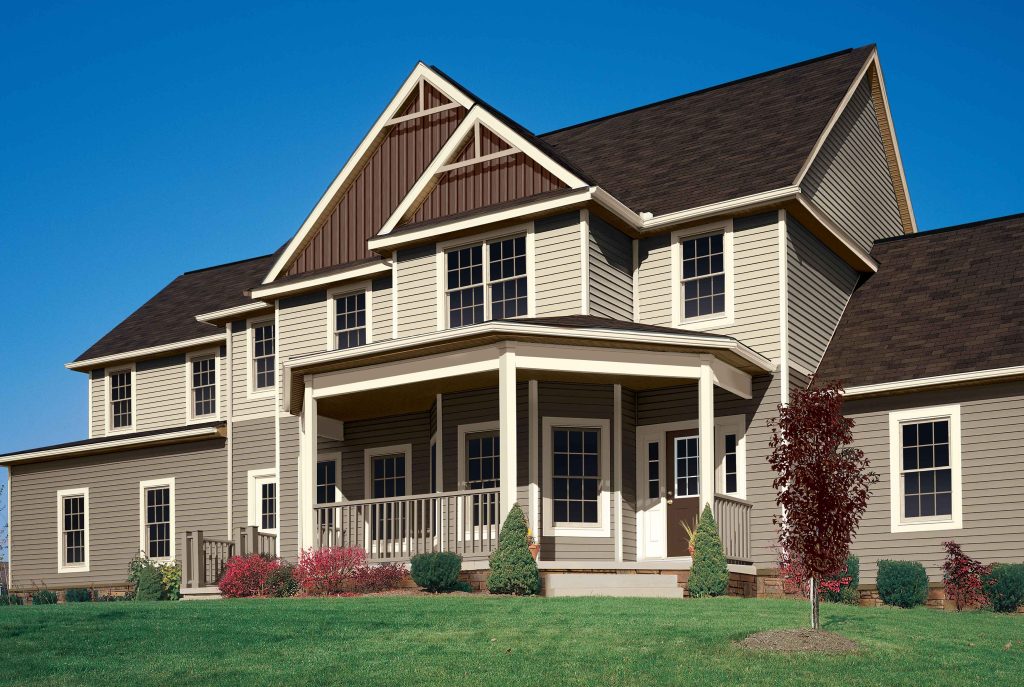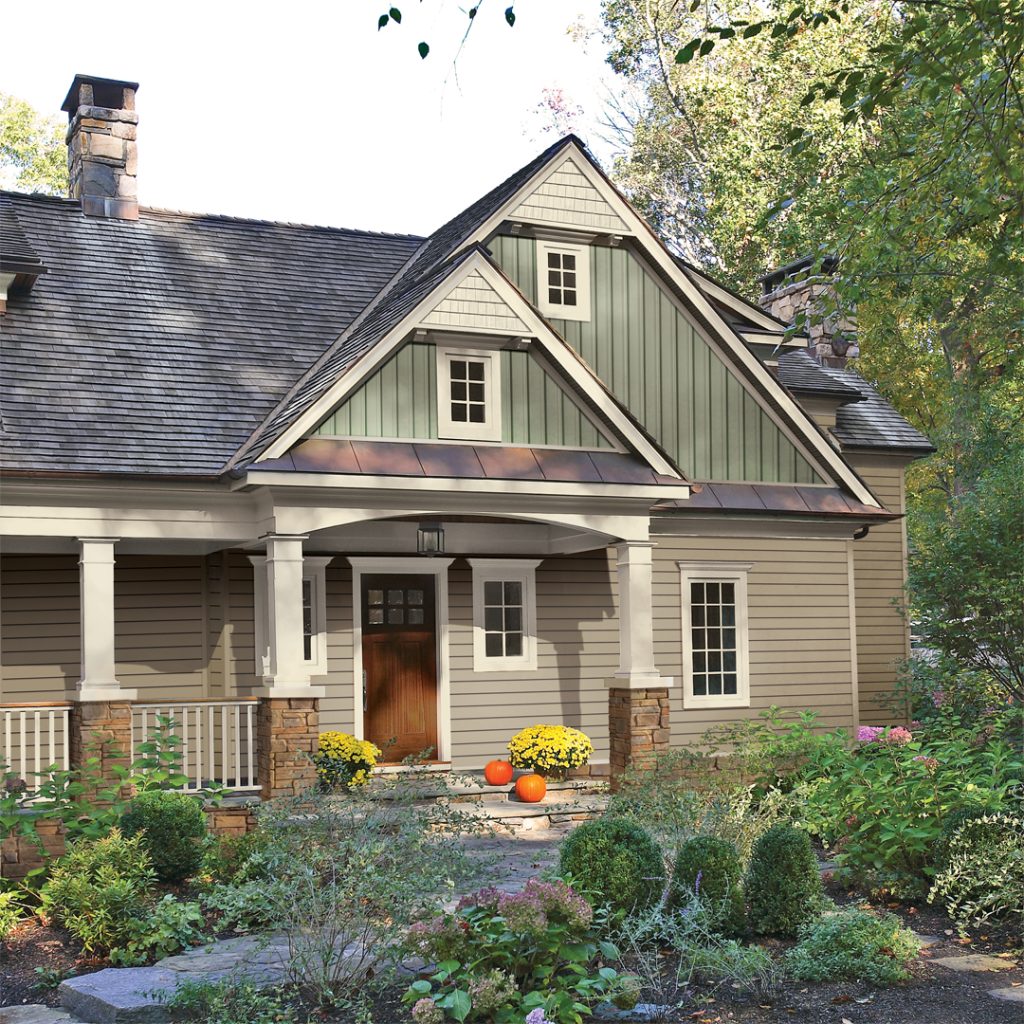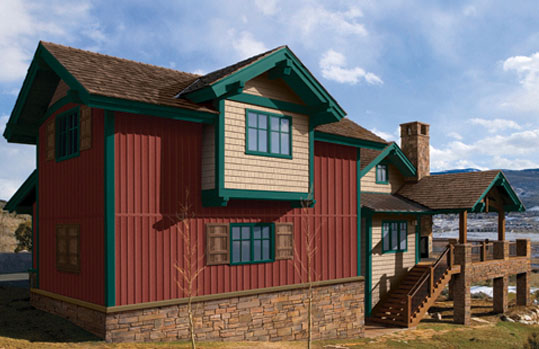When it comes to siding trends, one of the biggest ongoing trends is vertical installations—and board-and-batten in particular. Whether a full façade for a Modern Farmhouse exterior or used in a gable accent, board-and-batten styles can add a traditional or contemporary touch and are an easy, eye-catching way to create popular multi-textured facades. And for ease and affordability, board-and-batten vinyl siding options are readily available.
In fact, board-and-batten vinyl siding offers some installation advantages over fiber cement board-and-batten: Namely, with full profiles and an integrated nailing hem, there’s no need to cut battens, no extra prep work to hide nails behind battens, and no worries about water getting behind the battens. Plus, you’ll have fewer penetrations into the wall envelope.
Board-and-Batten Vinyl Options
Westlake Royal Building Products™ offers board-and-batten vinyl siding options in two design options: a 7” o.c. batten and a 10” o.c. batten.
Exterior Portfolio® Board-and-Batten siding features a traditional 7” on-center vertical batten profile, with a low-gloss finish that replicates the look of cedar. It has a seamless appearance suitable for the full façade or an accent, and it is designed to withstand winds of up to 170 mph.

CraneBoard® Solid Core Siding® comes in a board-and-batten profile with a 10” on-center batten for a more robust look, and its Double 10” design means fewer panels to install. The wider batten is made possible by CraneBoard’s insulated backing, which adds greater rigidity, more thermal resistance, and a more robust appearance.
Both board-and-batten siding options feature Chromatix™ technology that helps keep colors from fading.

Best Practices for Installing Board-and-Batten Vinyl Siding
Like any board-and-batten application, pre-planning your board-and-batten vinyl siding is critical to ensure an aesthetically pleasing result. Start by finding the center of your wall and planning outward in both horizontal directions to ensure your panels are even on either end and the overall look of the wall is balanced. Otherwise, you may end up with an asymmetrical appearance.
Unlike traditional vinyl siding installation, board-and-batten vinyl siding profiles install vertically. Requirements may vary from product to product, so be sure to follow all manufacturer instructions, including requirements or recommendations for water-resistant barriers.

Vertical installation means you won’t nail into the studs, with nails 16” o.c., like horizontal applications. Because of this, be sure to use a sheathing rated as a nailable substrate. More nails also will be required—Westlake Royal, for example, recommends nails every 12” for board-and-batten vinyl siding instead of the typical 16”.
Like any vinyl siding application, the same principles apply to accommodate normal expansion and contraction: Nail loosely, not completely flush, and follow instructions for proper gaps at top and bottom (particularly at the bottom as vertically hung siding is likely to expand downward). Hang the siding from top to bottom, with the top nail in the top of the slot and the rest in the middle.
For more projects and inspiration, subscribe to our enewsletter.

